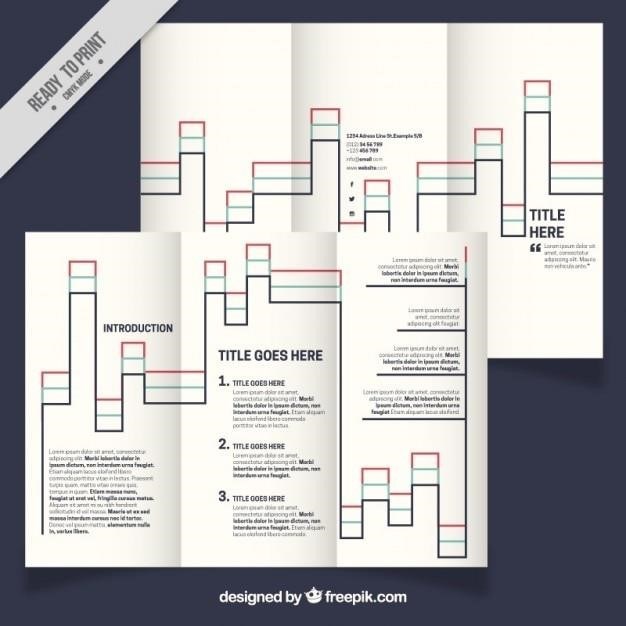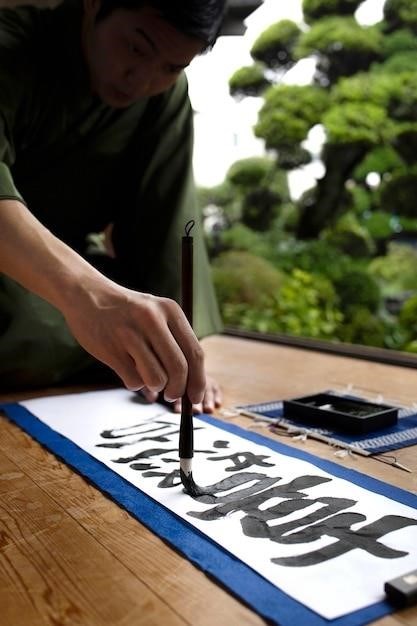the jakarta method doctype:pdf
The Jakarta Method⁚ A History of Cold War Violence
The Jakarta Method, as described in Vincent Bevins’ 2020 book of the same name, refers to the brutal suppression of communist movements in Indonesia during the 1965-1966 period. This event, characterized by mass killings and widespread human rights violations, served as a model for similar actions in other countries during the Cold War. The book explores the role of the United States in supporting the Indonesian military’s anti-communist campaign, highlighting the dark side of America’s Cold War strategy.
The Jakarta Method⁚ An Overview
The Jakarta Method, a term coined by historian Vincent Bevins, describes a systematic approach to eliminating leftist and communist movements during the Cold War era. This method, often involving mass killings, intimidation, and the suppression of dissent, was employed by US-backed regimes in various countries, with Indonesia serving as a prime example. The method’s core objective was to prevent the spread of communism, a primary concern for the US during the Cold War. The Jakarta Method is not simply a historical event but rather a pattern of behavior, a strategy used by the US to counter communist influence around the globe. It represents a dark chapter in Cold War history, highlighting the use of violence and manipulation in achieving political objectives. The Jakarta Method serves as a reminder of the devastating consequences of Cold War politics and the importance of critically examining the historical context of events.
The Indonesian Massacres of 1965-66
The Indonesian Massacres of 1965-66 stand as a horrific example of the Jakarta Method in action. Following a failed coup attempt blamed on the Indonesian Communist Party (PKI), the Indonesian military, with US support, launched a brutal crackdown on suspected communists and leftists. The killings, estimated to have claimed the lives of between 500,000 and one million people, were characterized by widespread violence, arbitrary arrests, and extrajudicial executions. The Indonesian military, aided by right-wing militias, engaged in systematic targeting of individuals associated with the PKI, often based on flimsy accusations or mere suspicion. The massacres were a devastating blow to Indonesian society, leaving a legacy of trauma and fear that continues to resonate today. This period of intense violence marked a significant turning point in Indonesian history, cementing the military’s dominance and effectively eliminating the PKI as a political force.
The Role of the United States
The United States played a crucial role in facilitating the Indonesian Massacres of 1965-66, providing crucial support to the Indonesian military in its anti-communist campaign. The US government, deeply concerned about the spread of communism in Southeast Asia, viewed the PKI as a threat to its strategic interests in the region. Despite the massacres’ brutality, the US provided significant military aid, intelligence, and training to the Indonesian military, effectively endorsing its actions. The US government’s involvement went beyond mere support; it actively encouraged and facilitated the crackdown, providing crucial intelligence and logistical support to the Indonesian military. This active participation in the massacres underscores the US’s commitment to containing communism during the Cold War, even at the cost of human rights and democratic values.
The Jakarta Method’s Wider Impact
The Jakarta Method’s influence extended far beyond Indonesia, shaping the Cold War’s global landscape. It served as a blueprint for similar anti-communist campaigns in various countries, particularly in Latin America. The US, emboldened by its success in Indonesia, employed similar tactics to support right-wing governments and suppress leftist movements in countries like Chile, Guatemala, and Brazil. These actions, often characterized by violence and human rights abuses, contributed to the widespread fear of communism and strengthened the US’s global influence. The Jakarta Method, therefore, became a potent symbol of the Cold War’s brutality and the lengths to which the US was willing to go to secure its strategic interests, leaving a lasting legacy of violence and political instability in its wake.
The Jakarta Method in the Context of Cold War History
The Jakarta Method, as described in Vincent Bevins’ book, sheds light on the Cold War’s darker aspects, revealing the extent to which the US was willing to support authoritarian regimes in its quest to contain communism.
The Cold War and the Struggle for Global Hegemony
The Cold War, a period of geopolitical tension between the United States and the Soviet Union, was characterized by a struggle for global hegemony. Both superpowers sought to expand their influence and control over various regions of the world. This competition played out on multiple fronts, including ideological, economic, and military spheres. The US, driven by its anti-communist ideology, sought to prevent the spread of Soviet influence and to secure its position as the dominant power. This ambition led to the implementation of various strategies, including the formation of alliances, the establishment of military bases, and the support of anti-communist regimes. The Jakarta Method, as documented by Vincent Bevins, exemplifies the lengths to which the US was willing to go in order to achieve its Cold War objectives.
The US’s Anticommunist Crusade
The US’s anticommunist crusade was a defining feature of the Cold War. Driven by the belief that communism posed a fundamental threat to American values and interests, the US government pursued a range of policies aimed at containing and ultimately defeating the Soviet Union and its allies. This crusade manifested in various forms, including military buildup, alliances with anti-communist regimes, covert operations, and propaganda campaigns. The US government actively sought to undermine communist movements worldwide, often through the use of force or the support of authoritarian regimes. The Jakarta Method, as detailed in Vincent Bevins’ book, stands as a chilling example of the US’s willingness to engage in violence and human rights violations in pursuit of its anticommunist objectives. The Indonesian events exposed the dark side of the US’s Cold War strategy and the devastating consequences of its anticommunist crusade.
The Jakarta Method and the Legacy of the Cold War
The Jakarta Method stands as a stark reminder of the violence and brutality that characterized the Cold War. It exposed the dangers of Cold War politics, where the pursuit of ideological dominance often justified human rights abuses and the suppression of dissent. The legacy of the Cold War continues to shape global affairs, impacting international relations, political systems, and cultural identities. The Jakarta Method serves as a cautionary tale about the dangers of unchecked power, the need for accountability, and the importance of upholding human rights in the face of ideological conflicts. While the Cold War officially ended in 1991, its echoes can be seen in contemporary global challenges such as the rise of populism, the resurgence of nationalism, and the growing polarization of political discourse. Understanding the Jakarta Method and its wider implications is crucial for navigating the complexities of the 21st century and preventing similar atrocities from happening in the future.

The Jakarta Method’s Relevance Today
The Jakarta Method’s relevance today lies in its stark warning about the dangers of unchecked power, the need for accountability, and the importance of upholding human rights.
The Continuing Impact of Cold War Violence
The Jakarta Method’s legacy extends beyond the immediate aftermath of the 1965-1966 massacres. The violence unleashed in Indonesia had a profound and lasting impact, shaping political landscapes and influencing events far beyond its borders. The systematic targeting and elimination of leftist elements created a climate of fear and repression, stifling dissent and hindering the development of democratic institutions. The enduring effects of this violence are evident in the ongoing struggle for justice and accountability for the victims and their families. Moreover, the Jakarta Method serves as a chilling reminder of the potential consequences of Cold War ideology, highlighting the dangers of using violence and repression to achieve political goals.
The Importance of Understanding the Past
Understanding the Jakarta Method and its historical context is crucial for several reasons. Firstly, it sheds light on the dark side of the Cold War, revealing the human cost of ideological conflict and the lengths to which powerful nations would go to suppress perceived threats. Secondly, it underscores the importance of acknowledging and confronting past injustices, particularly those committed in the name of national security or anti-communism. By studying the Jakarta Method, we can learn from the mistakes of the past and work towards a more just and peaceful future. Furthermore, it serves as a reminder of the need for vigilance against authoritarianism and the dangers of unchecked power, both within states and in the international arena.
The Jakarta Method’s Lessons for the Present
The Jakarta Method serves as a sobering reminder of the potential for violence and human rights abuses in the name of ideological conflict. Its lessons remain relevant today, particularly in a world where geopolitical tensions and the rise of populism have created fertile ground for authoritarianism and the suppression of dissent. The events in Indonesia highlight the dangers of unchecked power, the importance of upholding human rights, and the need for accountability for past atrocities. By understanding the Jakarta Method, we can better recognize and challenge similar patterns of violence and oppression in the present, ensuring that the mistakes of the past are not repeated.

Further Reading and Resources
For those seeking a deeper understanding of the Jakarta Method, a wealth of resources is available, including Vincent Bevins’ groundbreaking book, academic articles, and dedicated organizations and websites focusing on Cold War history.
The Jakarta Method⁚ Book by Vincent Bevins
Vincent Bevins’ The Jakarta Method⁚ Washington’s Anticommunist Crusade and the Mass Murder Program that Shaped Our World is a crucial text for understanding the Jakarta Method; This book, published in 2020, delves into the history of the US’s involvement in the Indonesian massacres of 1965-1966. Bevins argues that the US government actively supported the Indonesian military’s brutal crackdown on the Indonesian Communist Party (PKI), contributing to the deaths of hundreds of thousands, if not millions, of civilians. The book details how the US, driven by its anti-communist agenda, used a combination of covert operations, military aid, and propaganda to influence events in Indonesia. The Jakarta Method offers a stark reminder of the human cost of Cold War politics and the devastating consequences of US foreign policy in the developing world.
Academic Articles and Research on the Jakarta Method
The Jakarta Method has become a subject of increasing academic interest, with scholars exploring its historical context, political ramifications, and enduring legacy. Researchers have examined the role of the United States in the Indonesian massacres, analyzing the motivations behind US support for the Indonesian military and the impact of US foreign policy on the unfolding events. Other studies have focused on the experiences of victims and survivors, documenting the human cost of the violence and exploring the long-term effects on Indonesian society. Academic journals like Asian Studies⁚ Journal of Critical Perspectives on Asia and platforms like ResearchGate have published articles and research papers dedicated to shedding light on the Jakarta Method, contributing to a deeper understanding of this crucial historical period.
Organizations and Websites Dedicated to Cold War History
Several organizations and websites are dedicated to researching and preserving the history of the Cold War, including its often-overlooked darker aspects. These institutions provide valuable resources for those seeking to learn more about the Jakarta Method and its broader context. The London School of Economics and Political Science (LSE) houses an extensive online repository, LSE Research Online, which features a wide range of academic publications related to Cold War history and international relations. Additionally, organizations like the National Security Archive, a non-profit research institute focused on government secrecy and accountability, offer declassified documents and analysis that shed light on the US government’s role in Cold War events. These resources, along with numerous online archives and databases, contribute to a growing body of knowledge about the Jakarta Method and its enduring impact on global politics.
